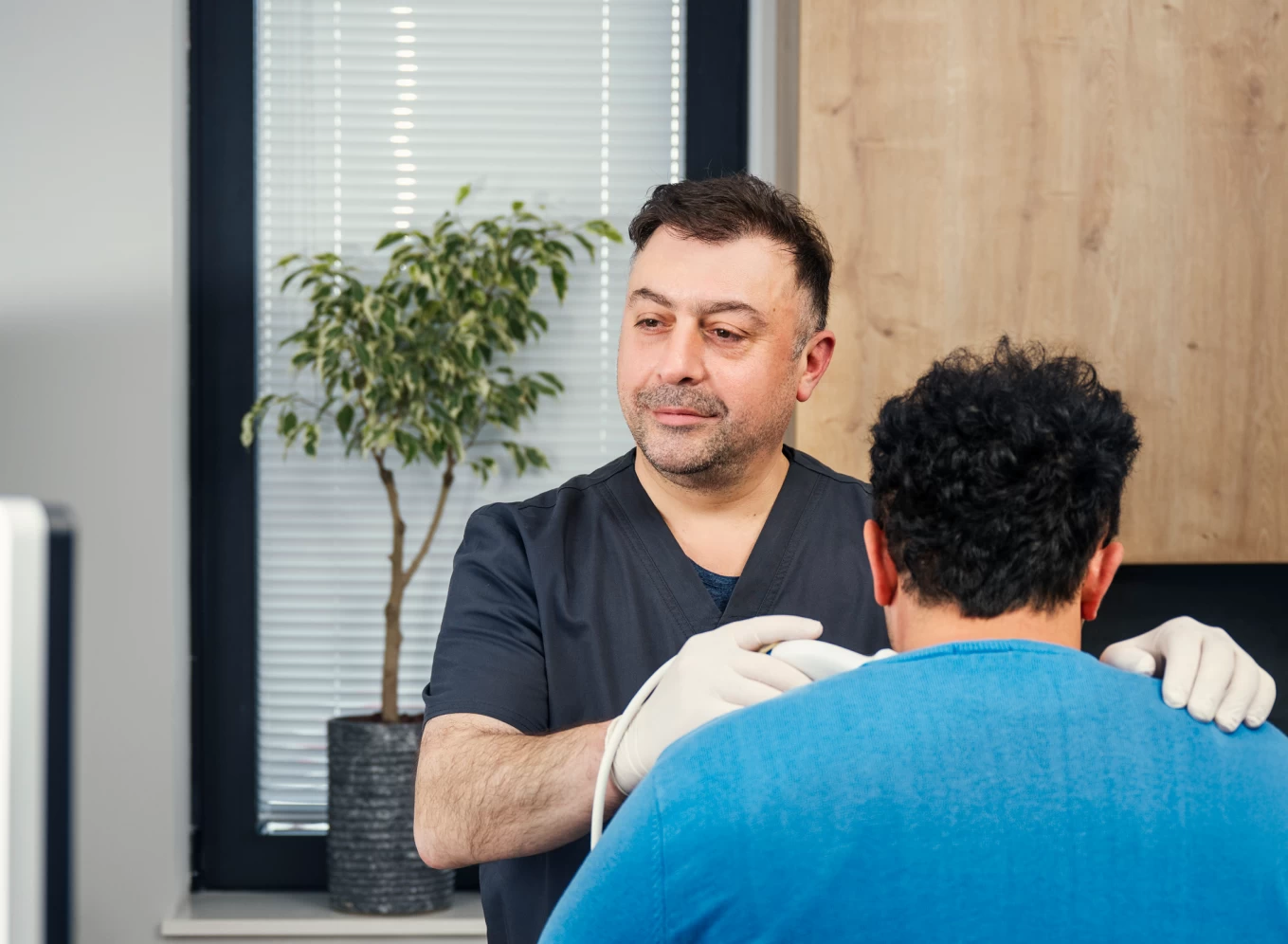Pain Management Department
Head of Department – Nikoloz Rtveliashvili
In the Pain Management Department, any type of pain can be studied comprehensively and treated, which involves identifying and eliminating its underlying cause, systemic medication therapy, performing minimally invasive procedures, and/or surgery.
Contact the Pain Management Department of Todua Clinic if:
- You have any type of pain whose origin remains undetermined despite numerous studies.
- Persistent, bothersome pain remains even after the treatment of the underlying disease, significantly reducing your quality of life.
- You have post-operative pain after a successful surgical procedure that no longer requires reoperation or when reoperation is not feasible.
- You need to differentiate the cause of pain using diagnostic procedures.
- You have pain caused by oncological pathology, and despite management with the corresponding protocol, the pain remains troublesome.
If you suffer from:
- Neck pain
- Back, shoulder, and chest pain
- Lower back pain
- Tailbone and coccyx pain
- Joint pain
- Pain caused by oncological pathology
- Headaches, scalp pain
- Post-herpetic or other neuropathic pain
- Complex regional pain syndrome, vegetative pain in the limbs, when vascular obstructive pathologies are excluded
- Phantom pain after limb amputation
- Any other undifferentiated pain
Remember, chronic pain management is a multidisciplinary field, and numerous specialists participate in it:
- Psychiatrist, psychologist, mental disorder specialist
- Neurologist
- Neurosurgeon
- Rheumatologist
- Traumatologist-orthopedist
- Oncologist
- Radiologist of various specialties and functional diagnostics specialists
- Anesthesiologist, and others
Pain management includes:
- Systemic treatment with oral medications or injections
- Systemic treatment with special medications administered by infusion in a clinical setting
- Minimally invasive procedures (e.g., blocks, radiofrequency ablation, neuromodulation, cryotherapy, neurostimulation)
- If necessary, surgical treatment based on joint examination and/or consensus decision
- For complex and multifocal pain, implantation of a spinal injection port and continuous infusion of an anesthetic into the spinal canal via a special device
- Prolonged neurostimulation through a special implantable electrode.


